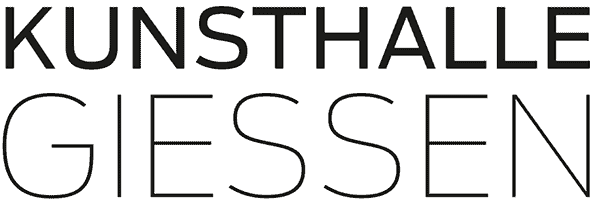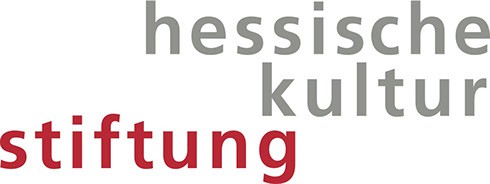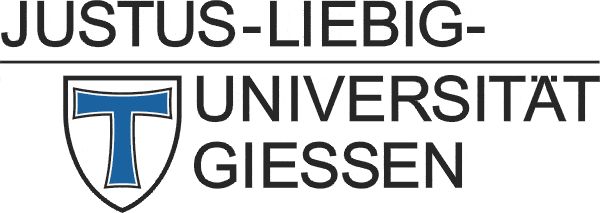
Heiner Goebbels
Landschaftsstücke/Landscape Plays
03.06. – 19.08.2018
Klang- und Videoinstallation in der Kunsthalle Gießen
Eröffnung 2. Juni 2018, 18:00 Uhr, Hermann-Levi-Saal im Rathaus
Kuratiert von Dr. Nadia Ismail
Mitarbeit René Liebert, Assistenz Niels Wehr
Eröffnung 2. Juni 2018, 18:00 Uhr, Hermann-Levi-Saal im Rathaus
Kuratiert von Dr. Nadia Ismail
Mitarbeit René Liebert, Assistenz Niels Wehr
In der Einzelausstellung Landschaftsstücke / Landscape Plays verbindet der Frankfurter Künstler Heiner Goebbels die beiden Medien Klang- und Videoinstallation in einem neuen Format. Man sieht fünf großformatige, teilweise synchron laufende Videoarbeiten, deren Tonspuren aber derart aufeinander bezogen und miteinander verzahnt sind, dass auf verblüffende Weise das Hören ins Zentrum gerückt ist – als akustisches Erleben einer komplexen Klangkomposition aus Stimmen, Geräuschen und Musik.
Das in Museen und Galerien bisweilen störende Nebeneinander von Arbeiten mit Tonspuren wird hier durch die kompositorische Kompetenz von Heiner Goebbels in ihr Gegenteil verkehrt: zu einem ästhetischen Zusammenklang auch der unterschiedlichsten Bildelemente, bei deren Auswahl der Betrachter frei ist.
Die Solo-Ausstellung Landschaftsstücke / Landscape Plays spielt dabei schon in ihrem Titel mit der aktuellen Nähe von zeitgenössischen Performing Arts und bildender Kunst, die für die weltweit gefeierten Musiktheaterstücke von Heiner Goebbels so charakteristisch ist.
Dabei ist Landscape Plays zunächst ein Begriff der amerikanischen Autorin Gertrude Stein, mit dem sie ihre Stücke bezeichnet, die jenseits linearer Narration und traditioneller Strukturen quasi die ‚Fahrtrichtung’ der traditionell repräsentativen Kunstform Theater umdrehen. Von der Bühne geht keine konsistente Botschaft oder Handlung aus, sondern Steins Insistenz auf der eigenen Realität ihrer Texte, auf dem freien Spiel mit Worten, Formen, Farben, Bewegungen und Bedeutungen macht den Zuschauer zum Souverän, der nach Belieben seine Aufmerksamkeit selbst fokussiert – wie bei der Betrachtung einer Landschaft oder eines Landschaftsbildes.
„In short I found that since the landscape was the thing, a play was a thing and I went on writing plays a great many plays. I felt that if a play was exactly like a landscape then there would be no difficulty about the emotion of the person looking on at the play being behind or ahead of the play because the landscape does not have to make acquaintance. You may have to make acquaintance with it, but it does not with you, it is there and so the play being written the relation between you at any time is so exactly that that it is of no importance unless you look at it. Well I did look at it and the result is in all the plays that I have printed as Operas and Plays.“
„The landscape has its formation and as after all a play has to have formation and be in relation one thing to the other thing and as the story is not the thing as any one is always telling something then the landscape not moving but being always in relation, the trees to the hills the hills to the fields the trees to each other any piece of it to any sky and then any detail to any other detail, the story is only of importance if you like to tell or like to hear a story but the relation is there anyway. And of that relation I wanted to make a play and I did, a great number of plays.“
„A landscape does not move nothing really moves in a landscape but things are there, and I put into the play the things that were there. Magpies are in the landscape that is they are in the sky of a landscape, they are black and white and they are in the sky of the landscape.“
Gertrude Stein: Plays, aus: Lectures in America
Ein derart offener Begriff von Landschaft hat Heiner Goebbels schon sehr früh inspiriert:
• zu Textlandschaften in seinen Hörstücken z.B. in der performativen Installation Maelstromsüdpol, zusammen mit Heiner Müller und Erich Wonder, documenta VIII 1987
• zu szenischen Skizzen und Bildlandschaften, wie in seiner Performance Landscape with Man being killed by a Snake (nach Nicolas Poussin), documenta X 1997
• zu Musiktheaterstücken und Opern mit dem Ensemble Modern, z.B. Landschaft mit entfernten Verwandten Genf, 2002
• oder zur performativen Installation Stifters Dinge, die sich auf den Autor und Landschaftsmaler Adalbert Stifter bezieht.
Andere Arbeiten – wie Hashirigaki 2000 – nach Texten aus Gertrude Steins The Making of Americans, seine Inszenierungen von John Cages Europeras 1&2 und De Materie, einer Oper von Louis Andriessen (Ruhrtriennale 2012 und 2014) – entwickeln diese Perspektive weiter.
Auch darauf nimmt die Ausstellung Landschaftsstücke / Landscape Plays Bezug.
Heiner Goebbels
Komponist und Theatermacher, geb.1952, lebt seit 1972 in Frankfurt/Main; Studium der Soziologie und Musik.
Szenische Konzerte, Hörstücke, Kompositionen für Ensemble und großes Orchester (Surrogate Cities, 1994). Seit Beginn der 1990er Jahre Musiktheaterwerke: Ou bien le débarquement désastreux (Paris, 1993), Schwarz auf Weiss (Frankfurt, 1996), Max Black (Lausanne, 1998), Eislermaterial (München, 1998), Landschaft mit entfernten Verwandten (Genf, 2002), Eraritjaritjaka (Lausanne, 2004), Songs of Wars I have seen (London, 2007) Stifters Dinge (Lausanne, 2007), I went to the house but did not enter (Edinburgh, 2008), When the Mountain changed its clothing (Bochum, 2012), mit einem Namen aus einem alten Buch (Gießen, 2018) u.a. Mit allen seinen Konzerten und Musiktheaterstücken zahlreiche Gastspiele auf den weltweit wichtigsten Musik-, Theater- und Kunstfestivals.
Sound- und Videoinstallationen documenta 1982/1987/1997, Artangel London 2012, Musée d’art contemporain Lyon 2014, Albertinum Dresden 2016, New Space Moskau 2017.
CD-Produktionen bei ECM Records, Anthologie Komposition als Inszenierung (2002) und Ästhetik der Abwesenheit (2012). Zahlreiche internationale Hörspiel-, Theater- und Musikpreise (Prix Italia, Europäischer Theaterpreis, International Ibsen Award u.v.a.). Composer in residence beim Lucerne Festival, Artist in residence an der Cornell University, Ithaca. Mitglied mehrerer Akademien der Künste, Honorable Fellow des Dartington College of Arts und der Central School of Speech and Drama, London; Fellow am Wissenschaftskolleg zu Berlin (2007/08). Honorable Doctorade der Birmingham City University und der National Academy for Theatre and Film Arts, Sofia.
1999–2018 Professor am Institut für Angewandte Theaterwissenschaft der Justus-Liebig-Universität
Gießen, 2006–2018 Präsident der Hessischen Theaterakademie.
Intendant der Ruhrtriennale–International Festival of the Arts 2012–2014.
2018 wurde er vom Präsidenten der Justus-Liebig-Universität zum ersten Inhaber der Georg-Büchner-Professur berufen.
www.heinergoebbels.com
Das in Museen und Galerien bisweilen störende Nebeneinander von Arbeiten mit Tonspuren wird hier durch die kompositorische Kompetenz von Heiner Goebbels in ihr Gegenteil verkehrt: zu einem ästhetischen Zusammenklang auch der unterschiedlichsten Bildelemente, bei deren Auswahl der Betrachter frei ist.
Die Solo-Ausstellung Landschaftsstücke / Landscape Plays spielt dabei schon in ihrem Titel mit der aktuellen Nähe von zeitgenössischen Performing Arts und bildender Kunst, die für die weltweit gefeierten Musiktheaterstücke von Heiner Goebbels so charakteristisch ist.
Dabei ist Landscape Plays zunächst ein Begriff der amerikanischen Autorin Gertrude Stein, mit dem sie ihre Stücke bezeichnet, die jenseits linearer Narration und traditioneller Strukturen quasi die ‚Fahrtrichtung’ der traditionell repräsentativen Kunstform Theater umdrehen. Von der Bühne geht keine konsistente Botschaft oder Handlung aus, sondern Steins Insistenz auf der eigenen Realität ihrer Texte, auf dem freien Spiel mit Worten, Formen, Farben, Bewegungen und Bedeutungen macht den Zuschauer zum Souverän, der nach Belieben seine Aufmerksamkeit selbst fokussiert – wie bei der Betrachtung einer Landschaft oder eines Landschaftsbildes.
„In short I found that since the landscape was the thing, a play was a thing and I went on writing plays a great many plays. I felt that if a play was exactly like a landscape then there would be no difficulty about the emotion of the person looking on at the play being behind or ahead of the play because the landscape does not have to make acquaintance. You may have to make acquaintance with it, but it does not with you, it is there and so the play being written the relation between you at any time is so exactly that that it is of no importance unless you look at it. Well I did look at it and the result is in all the plays that I have printed as Operas and Plays.“
„The landscape has its formation and as after all a play has to have formation and be in relation one thing to the other thing and as the story is not the thing as any one is always telling something then the landscape not moving but being always in relation, the trees to the hills the hills to the fields the trees to each other any piece of it to any sky and then any detail to any other detail, the story is only of importance if you like to tell or like to hear a story but the relation is there anyway. And of that relation I wanted to make a play and I did, a great number of plays.“
„A landscape does not move nothing really moves in a landscape but things are there, and I put into the play the things that were there. Magpies are in the landscape that is they are in the sky of a landscape, they are black and white and they are in the sky of the landscape.“
Gertrude Stein: Plays, aus: Lectures in America
Ein derart offener Begriff von Landschaft hat Heiner Goebbels schon sehr früh inspiriert:
• zu Textlandschaften in seinen Hörstücken z.B. in der performativen Installation Maelstromsüdpol, zusammen mit Heiner Müller und Erich Wonder, documenta VIII 1987
• zu szenischen Skizzen und Bildlandschaften, wie in seiner Performance Landscape with Man being killed by a Snake (nach Nicolas Poussin), documenta X 1997
• zu Musiktheaterstücken und Opern mit dem Ensemble Modern, z.B. Landschaft mit entfernten Verwandten Genf, 2002
• oder zur performativen Installation Stifters Dinge, die sich auf den Autor und Landschaftsmaler Adalbert Stifter bezieht.
Andere Arbeiten – wie Hashirigaki 2000 – nach Texten aus Gertrude Steins The Making of Americans, seine Inszenierungen von John Cages Europeras 1&2 und De Materie, einer Oper von Louis Andriessen (Ruhrtriennale 2012 und 2014) – entwickeln diese Perspektive weiter.
Auch darauf nimmt die Ausstellung Landschaftsstücke / Landscape Plays Bezug.
Heiner Goebbels
Komponist und Theatermacher, geb.1952, lebt seit 1972 in Frankfurt/Main; Studium der Soziologie und Musik.
Szenische Konzerte, Hörstücke, Kompositionen für Ensemble und großes Orchester (Surrogate Cities, 1994). Seit Beginn der 1990er Jahre Musiktheaterwerke: Ou bien le débarquement désastreux (Paris, 1993), Schwarz auf Weiss (Frankfurt, 1996), Max Black (Lausanne, 1998), Eislermaterial (München, 1998), Landschaft mit entfernten Verwandten (Genf, 2002), Eraritjaritjaka (Lausanne, 2004), Songs of Wars I have seen (London, 2007) Stifters Dinge (Lausanne, 2007), I went to the house but did not enter (Edinburgh, 2008), When the Mountain changed its clothing (Bochum, 2012), mit einem Namen aus einem alten Buch (Gießen, 2018) u.a. Mit allen seinen Konzerten und Musiktheaterstücken zahlreiche Gastspiele auf den weltweit wichtigsten Musik-, Theater- und Kunstfestivals.
Sound- und Videoinstallationen documenta 1982/1987/1997, Artangel London 2012, Musée d’art contemporain Lyon 2014, Albertinum Dresden 2016, New Space Moskau 2017.
CD-Produktionen bei ECM Records, Anthologie Komposition als Inszenierung (2002) und Ästhetik der Abwesenheit (2012). Zahlreiche internationale Hörspiel-, Theater- und Musikpreise (Prix Italia, Europäischer Theaterpreis, International Ibsen Award u.v.a.). Composer in residence beim Lucerne Festival, Artist in residence an der Cornell University, Ithaca. Mitglied mehrerer Akademien der Künste, Honorable Fellow des Dartington College of Arts und der Central School of Speech and Drama, London; Fellow am Wissenschaftskolleg zu Berlin (2007/08). Honorable Doctorade der Birmingham City University und der National Academy for Theatre and Film Arts, Sofia.
1999–2018 Professor am Institut für Angewandte Theaterwissenschaft der Justus-Liebig-Universität
Gießen, 2006–2018 Präsident der Hessischen Theaterakademie.
Intendant der Ruhrtriennale–International Festival of the Arts 2012–2014.
2018 wurde er vom Präsidenten der Justus-Liebig-Universität zum ersten Inhaber der Georg-Büchner-Professur berufen.
www.heinergoebbels.com
Eröffnung
Samstag, 02.06.2018, 18 Uhr
Begrüßung
Dietlind Grabe-Bolz Oberbürgermeisterin der Stadt Gießen
Grußwort
Prof. Dr. Joybrato Mukherjee
Präsident Justus-Liebig-Universität, Gießen
Einführung
Dr. Nadia Ismail
Leiterin Kunsthalle Gießen
Heiner Goebbels
Begrüßung
Dietlind Grabe-Bolz Oberbürgermeisterin der Stadt Gießen
Grußwort
Prof. Dr. Joybrato Mukherjee
Präsident Justus-Liebig-Universität, Gießen
Einführung
Dr. Nadia Ismail
Leiterin Kunsthalle Gießen
Heiner Goebbels
Finissage
Prof. Marcel Baumgartner im Gespräch
mit Heiner Goebbels
Sonntag, 19.08.2018 I 11.00 Uhr
mit Heiner Goebbels
Sonntag, 19.08.2018 I 11.00 Uhr
Mit freundlicher Unterstützung:
Hessische Kulturstiftung
Justus-Liebig-Universität Gießen
Verein Ehrenamt Gießen e. V.
Hessische Kulturstiftung
Justus-Liebig-Universität Gießen
Verein Ehrenamt Gießen e. V.

